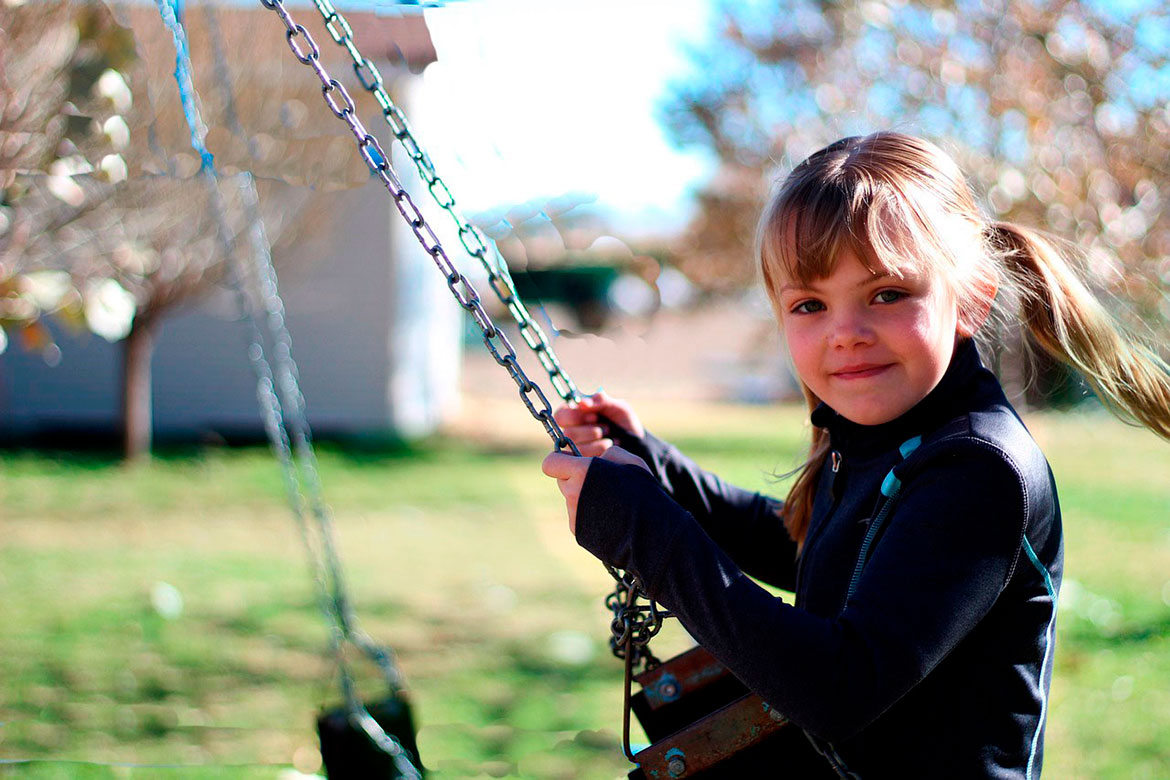Guide to Swinging Safely on the Playground
Hundreds of thousands of unnecessary injuries occur on playgrounds every year. Most, if not all, of them can be prevented with a commitment to supervision and diligence with maintenance procedures. Whether your child uses swing sets in public spaces or in your backyard, basic safety procedures should be taught and adhered to. When your child learns about proper playground usage, they decrease the possibility of personal accidents or injury. If you keep an eye out for maintenance and structural integrity problems, you can also reduce the risk of harm coming to your child.
Teach children about proper playground behavior. Advise against walking in front or in back of swings that are in use. Discourage play with loose structural parts such as ropes or miscellaneous debris on the ground. Educate children about the dangers of leaping from swings, and prohibit them from engaging in the activity. Kneeling or standing on swings invites falls. Using a single swing two at a time can stress the swing and invite accidents as well. Encourage children to use swings only after they sit down properly and hold the chains with both hands for support. Never leave a child unsupervised while they are using playground equipment. A watchful eye and quick first aid can mean the difference between a small scrape and a hospital visit. Use only full-bucket swing seats when entertaining infants and small children.
Inspect swing sets for signs of rust, breaks, or cracks. Rust weakens metal and can lead to the collapse of material while the swing is in use. Breaks and cracks in the set could also compromise suspension and swing set safety. Look for certain hooks on swings to instantly determine if your child could be at risk for injury. The Public Playground Safety Handbook advises that swing sets that utilize S-hooks should have the hooks pinched closed to avoid slips. Closing S-hooks can also reduce the risk of strangulation in very young children. Verify that all swing set frames are securely locked into a foundational surface as well.
Adequate spacing is a critical part of swing structure safety. All swings should be at least two feet apart from each other. The distance between the main support frame and the swings should measure at least 30 inches to prevent entanglement and collision. Two feet should be between the swing set and the ground. Swing sets need to be placed at least six feet away from other playground structures and never too close behind or in front of them. Good fall zones reserve at least six feet of space on the left and right sides of swing sets. Areas in back and in front of the swings need to be free from other materials to account for where a child might fall. The length of these fall zones should be at least twice the height of the swing set frame. The safest swing sets only contain two swings per structure.
If you are constructing or installing a swing set on private property, provide protective surfacing to guard against injuries sustained from falls. Each type of available protective surfacing, from natural mulch to rubber mats, has its own depth guidelines. These depend on the height from which a child could fall while using the swing set. A minimum of six inches of mulch, for example, should be placed below a swing set to cushion falls. In addition, other variables, like the compression of the protective surface, can influence how deep the surface has to be to provide adequate protection. Research your chosen protective surface to ensure that your child remains safe while playing on your swing set. Opt for swings that are made of soft rubber surfaces instead of wood or metal for both comfort and protection.
To maintain an appropriate safety standard, any playground area and its equipment should be regularly inspected. Ideally, you should take stock of the state of a recreational area and its structures before and after your child plays on them. Basic upkeep like replacing worn materials or tightening loose hooks and bolts should be routinely undertaken. Cover exposed screws to prevent cuts and scrapes. Ensure that the depth of your chosen protective surface remains adequate; replenish the surface if it's compromised of loose material. Verify that structures remain solid and sturdy throughout the year, and take special precautions to protect the materials from inclement weather, if possible.
Visit the following links for more information about safety on swings and in playgrounds:
- Home Playground Safety Tips
- Safety on the Playground
- Playground Safety
- Setting Up Your Child's Swing Set Safety Facts and Tips
- National Safety Council Playground Safety Fact Sheet
- Tips for Public Playground Safety (PDF)
- Loyola University Playground Safety Tips and Warnings
- Swing Mats and Safety Mulch
- Handbook for Public Playground Safety (PDF)
- Centers for Disease Control and Prevention Playground Injuries Fact Sheet
Find more about the author: Kim Hart


